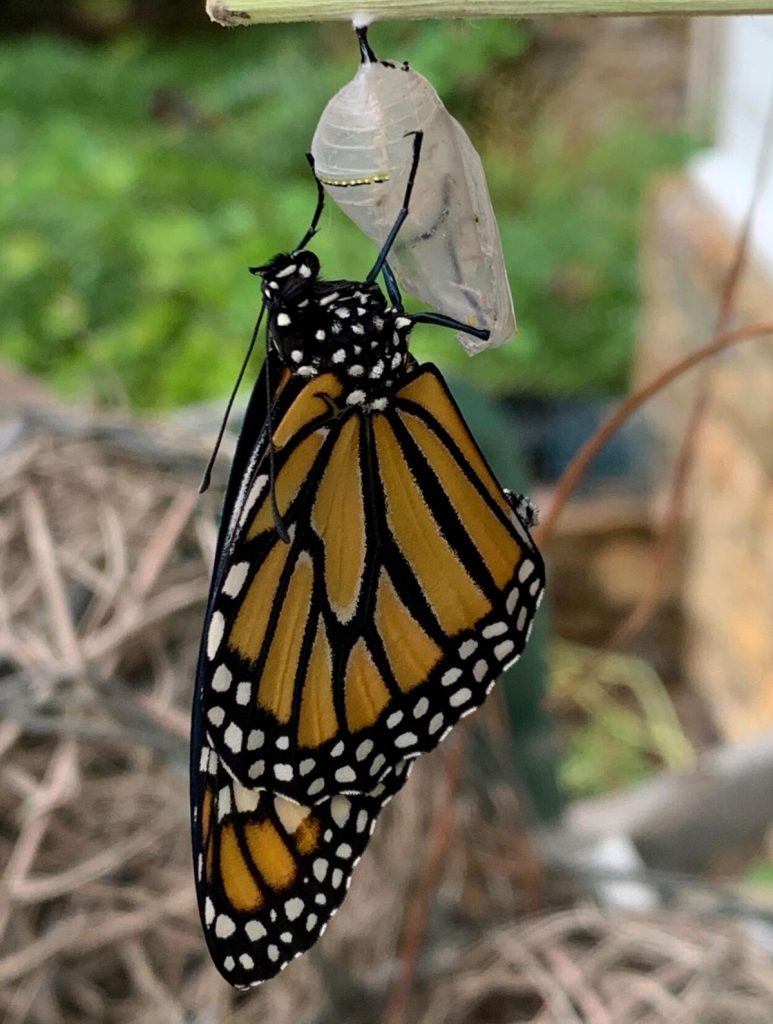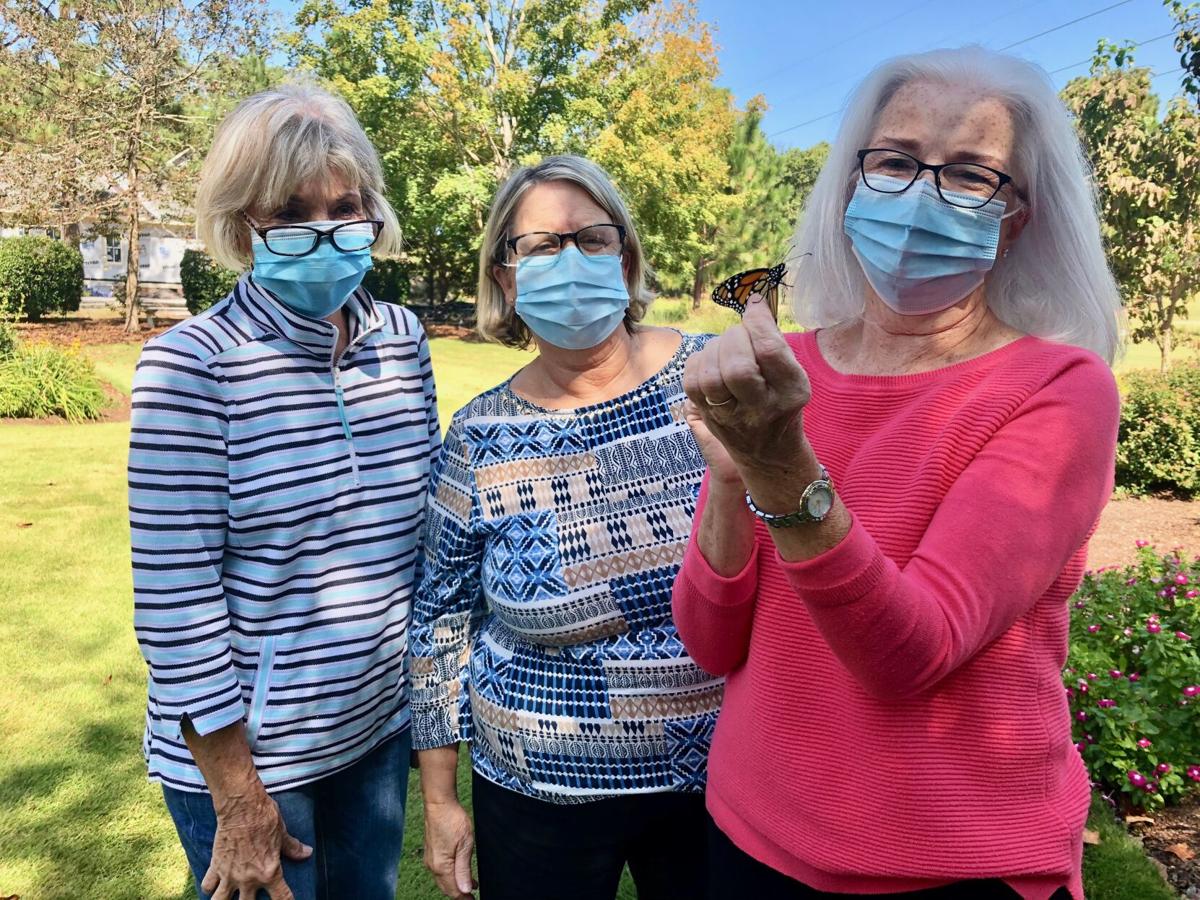Jody Young (left), Sandy Garrett and Janet Farrell of Linden Garden Club of Pinewild, prepare to release a monarch butterfly after affixing a tiny tracking tag to its wing.
By Claudia Watson Special to The Pilot Oct 1, 2020
Today, several friends from the Linden Garden Club of Pinewild Country Club joined me to tag and release their newly emerged monarch butterflies.
Although it’s a beautiful autumn day, it’s a bit too windy, so the still fragile day-old butterflies will spend a couple of more days in the butterfly tents in my garage sipping the nectar of freshly picked flowers.
“This has been so exciting and there’s so much to learn,” says Janet Farrell, a club member who tends the club’s protected pollinator habitat near the Pinewild Clubhouse. She’s been making regular early morning visits to my garage, intrigued by the tiny caterpillars as they go through metamorphosis.
After that meeting, many were eager to assist with the development of the Native Pollinator Garden at the Village Arboretum in Pinehurst. They, along with members of other local garden clubs, helped grow and plant native milkweed, the host plant where the adult monarch lays eggs and the caterpillars hatch and feed. They also planted hundreds of nectar plant seedlings that are needed to energize the butterflies for migration.
“It lit a fire in us,” says Sandy Garratt, another of the Linden Garden Club’s monarch enthusiasts. “The process taught us so much and we decided to do this in our club’s garden to help spread the awareness of planting native plants to attract our native pollinators,” she explains.
A group of club members, including Jody Young, a master gardener, spent time researching plants, amending the soil, and redesigning the garden’s layout. It’s now an ideal location to help support and nurture the butterflies and other pollinators.
Milkweed and various nectar plants were installed, along with a pretty yellow butterfly house to attract pollinators and the attention of passersby to their conservation efforts.
Garratt notes that these changes to the garden would not have occurred if not for the motivating experience at the Native Pollinator Garden, which is now a little over a year old.
That’s precisely the type of experience and result that Dr. Beth Franke Stevens, a biologist, and president of the Village Heritage Foundation, and Acker hoped for when they embarked on creating the garden.
With this summer’s addition of other perennials and a native grass border, the 10,000 square-foot Native Pollinator Garden is now complete and has been busy with visitors from near and far.
Monarch Watch recently certified it as a Monarch Waystation and the North American Butterfly Association recently certified it as Butterfly Garden. The National Wildlife Federation also certified the garden as a Wildlife Habitat. The recognition validates that the garden provides habitat for butterflies, birds and bees and a rich learning experience for all ages throughout the seasons.
Today, the garden is a haven for native pollinators species. But unlike most insects, monarch butterflies cannot survive the cold winter. Instead, those monarchs that live east of the Rockies fly to their winter roosting spots in forests high in Mexico’s mountains. At this latitude, the peak monarch migration occurs between Sept. 24 and Oct. 6, but that pattern is likely modified this year due to the recent strong storms.
But, Stevens notes that despite the storms, the Native Pollinator Garden offers an excellent opportunity to see the monarchs feeding at the waystation as they journey down the East Coast during the next few days.
Last September, the Village Heritage Foundation and the Village of Pinehurst sponsored the inaugural Flutterby Festival at the Arboretum and tagged and released hundreds of monarchs to join the migration. This year’s festival was postponed due to COVID restrictions, but next year’s Flutterby Festival is scheduled for Sept. 25, 2021.
For Garratt and others in the Linden Garden Club, the Native Pollinator Garden lessons have been put into practice and taken to heart.
“Three weeks ago, we found nearly two dozen monarch caterpillars on the milkweed we planted this past spring,” she says, pointing to the tent full of monarchs. “We’ve watched as they grew and transformed into chrysalises. Now, they are emerging as beautiful butterflies. They’re our babies, and they’ll embark on an incredible journey. Protecting them, raising them and releasing them is something you can’t explain unless you do it.”
Claudia Watson is a Pinehurst freelance writer.


